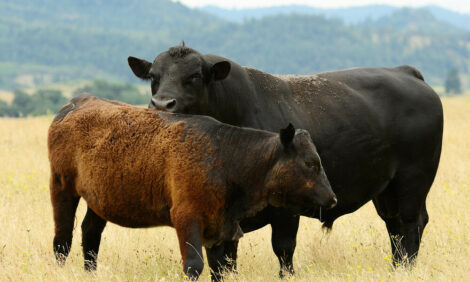



Commercial Beef Producers Increasingly Recognise Value of EBVs
SCOTLAND, UK - Buyers of bulls of all breeds have been looking more closely at Estimated Breeding Value (EBV) performance figures at the recent bull sales, a clear indication of the increasing recognition of their value by commercial beef producers.The increased interest from commercial bull buyers was also strongly in evidence at two recent Estimated Breeding Values (EBV) workshops where the priority of farmers attending was to learn how to quickly and confidently interpret figures when attending bull sales.
Farmers attending the workshops in Ayr and Thurso, run by Quality Meat Scotland (QMS) in conjunction with SAC Consulting, a division of Scotland’s Rural College (SRUC), were particularly interested in identifying bulls with good figures for calving ease, birth weight and milk.
According to Gavin Hill, Beef Specialist with SAC Consulting, the feedback from the producers attending the events, was that they now felt much more confident about how to use the figures to help them select the right bull for their purposes – from a bull to use on heifers to one for breeding replacements.
“Commercial farmers are the major buyers of bulls and they expect their purchase to do the job right. EBVs are an important additional tool to be used when making purchase decisions, adding weight to the visual assessment of the bull to ensure it has correct conformation, legs, locomotion and general character,” said Mr Hill.
“Many buyers arrive at the sales and look at the bulls visually for the correct characteristics. They then mark down their preferred bulls and only at that point do they look at the EBVs to narrow down their selection to those bulls which tick the box both visually and genetically. For some, the process is the reverse, with the figures considered first followed by a visual assessment.”
Mr Hill said one area of discussion was the calving ease figure which describes how easily the bull’s offspring should calve. In the context of this debate he said it was important to remember that calving ease is 75 per cent down to herd management and just 25 per cent down to genetics. As a result, some bulls with poor calving ease figures can give no problems if the herd is carefully managed – for example they would not be used with autumn –calving herds where the cows may be in very fit condition.
“Likewise buyers can take home a reasonably well rated bull on calving and find they have problems because they have not gone to the right females and they are not in the right condition for calving.”
Another area discussed at the workshops was the need to remember that the biggest differences are often within the breeds rather than between them. “Some breeds known in the past to be easy calving have moved their genetics on and now we can find certain breeding lines that can be difficult to calve. Commercial farmers want to have an informed choice and to get the heads up on what problems could lie ahead.”
The accuracy of figures was another issue which was discussed at the workshops. “’Accuracy’ is shown as a percentage alongside the EBV figure in the catalogues. It is determined by the amount of records available on the animal and its close relatives in any herd. With so much recording going on the accuracy figures continue to get higher and more reliable.”
TheCattleSite News Desk


